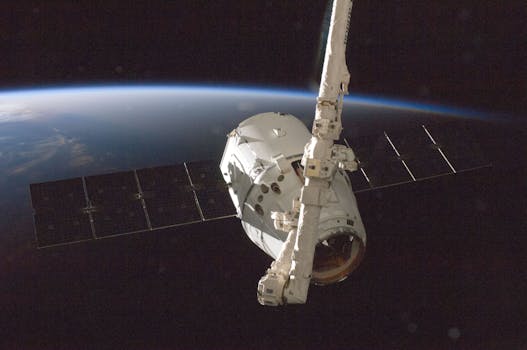
From Geostationary to Low Earth Orbit: The Evolution of Satellite Telecommunications in 2023
Satellite Telecommunications has undergone significant transformations over the years, and 2023 is no exception. The shift from geostationary to low earth orbit has been a remarkable journey, enabling faster, more efficient, and cost-effective communication solutions. In this article, we will delve into the history of satellite telecommunications, the advantages of low earth orbit, and the current state of the industry.
The first geostationary satellite was launched in 1963, marking the beginning of a new era in telecommunications. Geostationary satellites, orbiting at an altitude of approximately 36,000 kilometers, offered a wide range of services, including television broadcasting, telecommunications, and weather forecasting. However, they had limitations, such as high latency, limited bandwidth, and high operating costs.
In recent years, the satellite industry has witnessed a significant shift towards low earth orbit (LEO) satellites. LEO satellites, orbiting at an altitude of around 160-2,000 kilometers, offer several advantages over geostationary satellites. They have lower latency, higher bandwidth, and are more cost-effective. LEO satellites are also more agile and can be easily redeployed or replaced, making them an attractive option for a wide range of applications, including satellite internet, Earth observation, and telecommunications.
The Advantages of Low Earth Orbit Satellites
Low earth orbit satellites have several advantages that make them an attractive option for satellite telecommunications. One of the primary benefits is lower latency. LEO satellites have a significantly lower latency compared to geostationary satellites, making them ideal for real-time applications such as video conferencing, online gaming, and virtual reality. Additionally, LEO satellites offer higher bandwidth, enabling faster data transfer rates and more efficient communication solutions.
Another significant advantage of LEO satellites is their cost-effectiveness. Launching a LEO satellite is significantly cheaper than launching a geostationary satellite, making them a more affordable option for companies and organizations. Furthermore, LEO satellites are more agile and can be easily redeployed or replaced, reducing the risk of satellite failure and minimizing downtime.
Current State of the Industry
The satellite telecommunications industry is rapidly evolving, with several companies and organizations investing heavily in LEO satellite technology. One of the most notable examples is SpaceX’s Starlink constellation, which aims to provide global satellite internet coverage. Other companies, such as OneWeb and Amazon’s Kuiper Systems, are also developing their own LEO satellite constellations.
The growth of the LEO satellite market is driven by increasing demand for satellite-based services, such as satellite internet, Earth observation, and telecommunications. The market is expected to continue growing in the coming years, with estimates suggesting that the global LEO satellite market will reach $10 billion by 2025.
Conclusion
In conclusion, the evolution of satellite telecommunications from geostationary to low earth orbit has been a remarkable journey. LEO satellites offer several advantages, including lower latency, higher bandwidth, and cost-effectiveness, making them an attractive option for a wide range of applications. As the industry continues to grow and evolve, we can expect to see significant advancements in satellite technology, enabling faster, more efficient, and cost-effective communication solutions.






